When you think of optics for firearms today, your brain might just crash and shut down.
There are SO many options out there! Do you want a scope? If so, what type of scope? Thermal? LPVO? Bullet Drop Compensating? How about a red or green dot? Picatinny rail mount? For a pistol or rifle? Magnifying? OK, so you’re needing something else, like a spotting scope or rangefinder. Don’t forget binoculars – whether hunting or target shooting, they have a place. You have a world of items to choose from.
You can easily make the decision to not make the decision about what optic you want and put it off until tomorrow. Maybe I can help a little here, as we talk about an optics company that’s been around since 1971 and makes products that have helped many shooters over the years. That company is Burris Optics.
The founder of the company, Don Burris, was a design engineer for Redfield for 12 years, and as such, came up with these scope innovations:
- The first constantly centered non-magnifying reticle in variable power scopes
- The first 4-12x and 6-18x riflescopes
- The Redfield Accu-Range trajectory compensating dual reticle scope
- The Redfield Wideview riflescope
Most of these are in use today. He helped shape the rifle scope as we know it.
He decided that he would branch off on his own, so the Burris Optics company was founded in 1971. They manufactured rings, bases, and open sights, but after four years, they started making scopes. The Fullfield scope was the first scope manufactured, starting in 1975. I have an updated version of one here in front of me.
The company forged ahead with innovative products and techniques. Here is a paraphrased listing from the history page of the Burris website:
- 1979: Compact & Handgun Scopes
- 1980: Introduced the first American-made scopes with multi-coated lenses to optimize light transmission
- 1981: Launched Zee Rings, which are the most fail-proof of any rings to fit Weaver-style bases
- 1983: Introduced the industry’s first variable power handgun scope
- 1988: Introduced the industry’s first Scout Scope
- 1993: Developed the patented Posi-Lock® system that eliminated any binding or thread backlash
- 1995: Introduced Signature Rings, which gave shooters the ability to sight in their gun using just the rings.
- 2000: The Ballistic Plex™ reticle with trajectory compensation is introduced, along with the world’s first titanium riflescope
- 2002: Burris is acquired by Beretta.
- 2006: Introduced the first LaserScope that instantly provided distance to your target.
- 2007: Launched the FastFire, a mini red dot reflex sight that has become the choice of hunters and tactical shooters.
- 2010: The Burris Eliminator changes the optics market with its laser rangefinder and automatic BDC capabilities
- 2014: The premium Veracity riflescopes are introduced to the hunting market. They feature front focal plane reticles, zero click stop adjustments, and a 5x zoom system.
- 2015: New XTR Signature Rings™ with Pos-Align® offset Inserts bring the same benefits to tactical shooters that hunters have enjoyed for years.
The acquisition of the company by Beretta changed the game. Now, the company had the financial backing of a large firearms conglomerate and could make a significant impact in the market. They seem to have done this very well.
Forever Means Forever
One thing I want to mention up front is something that affects everything Burris sells. If you buy something from them – anything – you are covered by what they call their Forever Warranty – No Questions Asked. I thought I’d mention it here instead of listing it in each item’s specifications. That is a courageous move by any company. They obviously have faith in their products.
The Optics
I looked at four optics, as samples of what Burris builds. One of them is a Fullfield 4-16×50 scope with an illuminated reticle. Next is a FastFire C red dot. I have also owned a FastFire 4 red dot for a while, and it works very well.
It sits atop my S&W 1854 .44 Magnum lever rifle for the present. Also included in my shipment was their Signature LRF 2000 range finder. Lastly, a set of Droptine 10×42 binoculars was in the box.
Fullfield IV 4 – 16×50 with a 1” tube, model 201550


Here we see the adjuster knob (outer knob) for reticle illumination and the parallax adjustment knob (inner ring).
Speaking of the reticle…
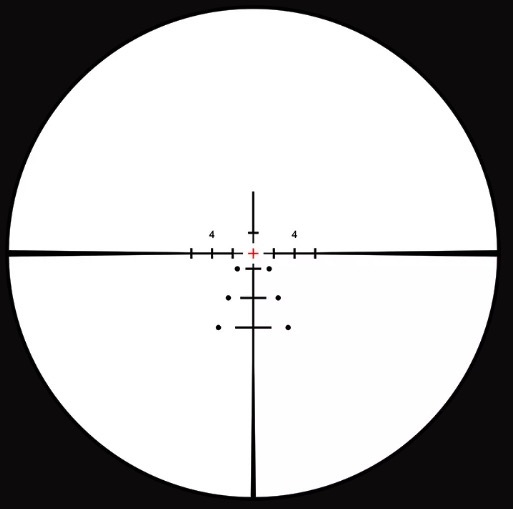
Nothing fancy. You have bullet drop holdover and windage adjustment marks, with a variable-intensity center cross. It works for me.
A quick note about mounting this scope: After trying the Burris Zee rings that came with the scope, I found that they didn’t work. The objective lens is too large for short-to-medium-height rings, so I picked up a set of high rings. That worked. You could also use a Pic rail riser. Once I got the scope lifted a bit, it sat on the rifle very nicely. This would not be an issue with most rifles, but I wanted to mount it on a Franchi Momentum All-Terrain Elite .308 that has a very long Picatinny rail. This rifle could double as a scout rifle.
Another problem that the rifle had with medium-height rings is that it has built-in sights, and the rear sight sticks up just enough that I needed higher rings. Again, most rifles will not have this problem, especially if their objective lens is less than 50 mm and they have no built-in rear sight. In the photo below, you also see a Real Avid Smart-Torq & Driver master set and the MTM Case Gard Gun Vise. These are two items I would not like to have to do without… they are super helpful for any type of work performed on long guns. Look for my review of this rifle soon.

This is a great example of a mid-level magnification scope, useful in many different circumstances. I live in the woods and very seldom hunt at distances greater than 150 yards or so, and that would be across a bordering corn field. Four to sixteen power magnification is just the ticket for this scenario.
The last deer I shot was at a measured 150 yards. She went down after being struck by a soft-point 123-grain bullet out of a Bear Creek Arsenal 7.62×39 AR. I believe I was using a variable-powered scope, set at about 10 power or so. That was a lot, but I like to get “up close and personal” with a scope, once I’ve zeroed in on a deer.
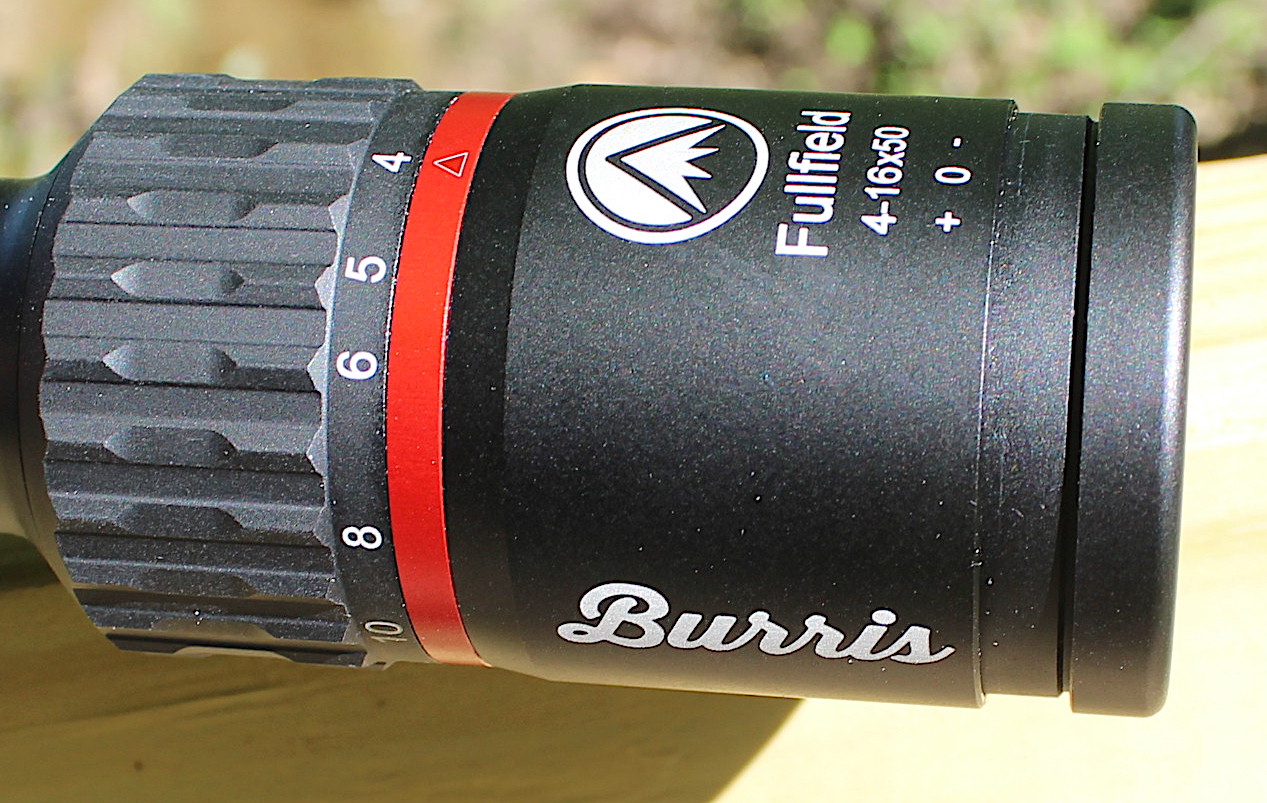
This scope would fit right into that situation. Use it at four power to open up your field of view, and then once you have a target, zoom in. This is not exactly earth-shaking news, but it works. Here are some more photos…
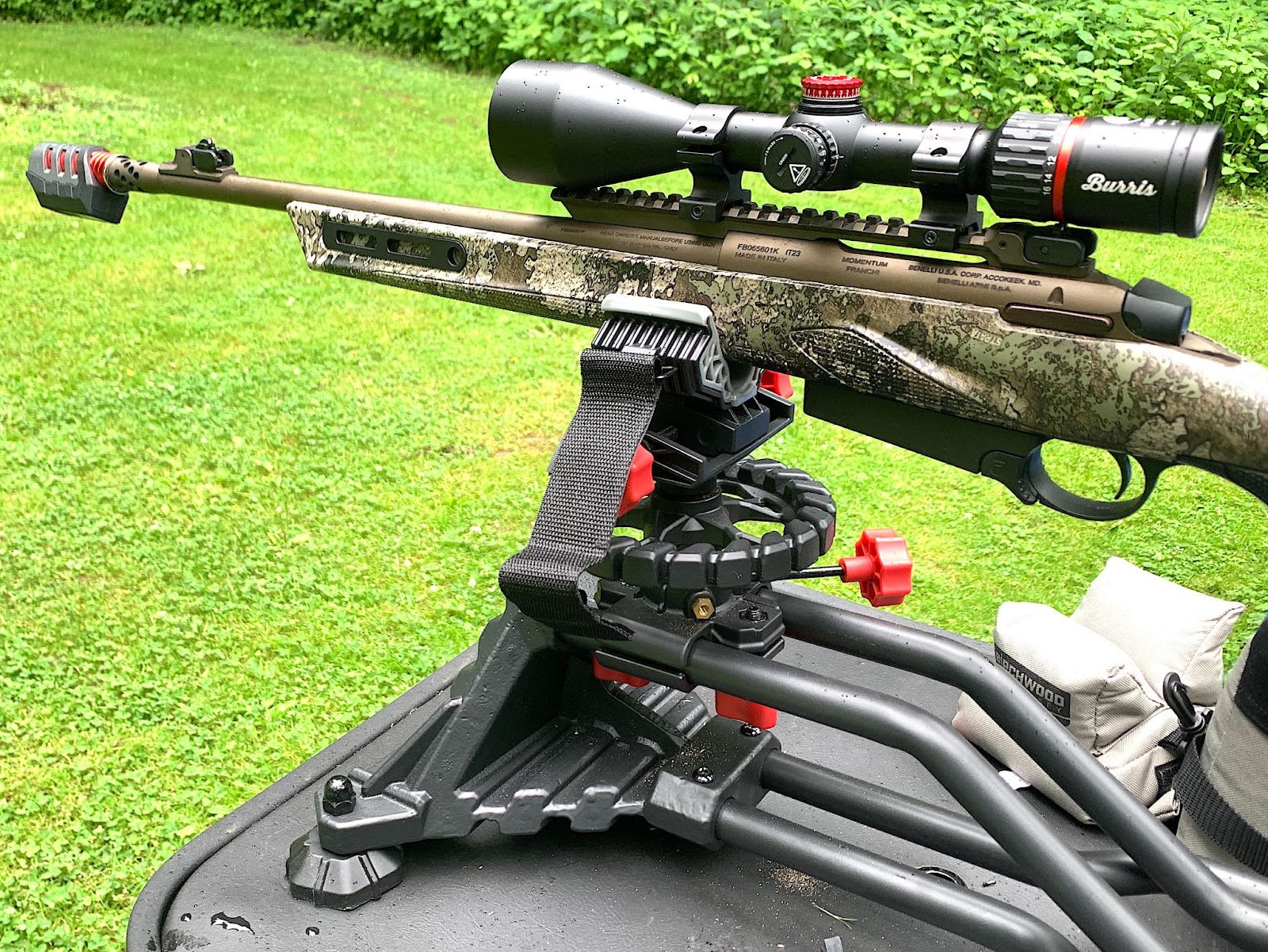
Also in this photo are the Real Avid Viz-Max Boresighter – magnetic, nothing in the bore. I love the Birchwood Casey Xtreme Shooting Bench and their Alpha rifle rest. Talk about heavy-duty…


Notice that the windage & elevation turrets are large and require no tools to use. The markings are clear, as well.
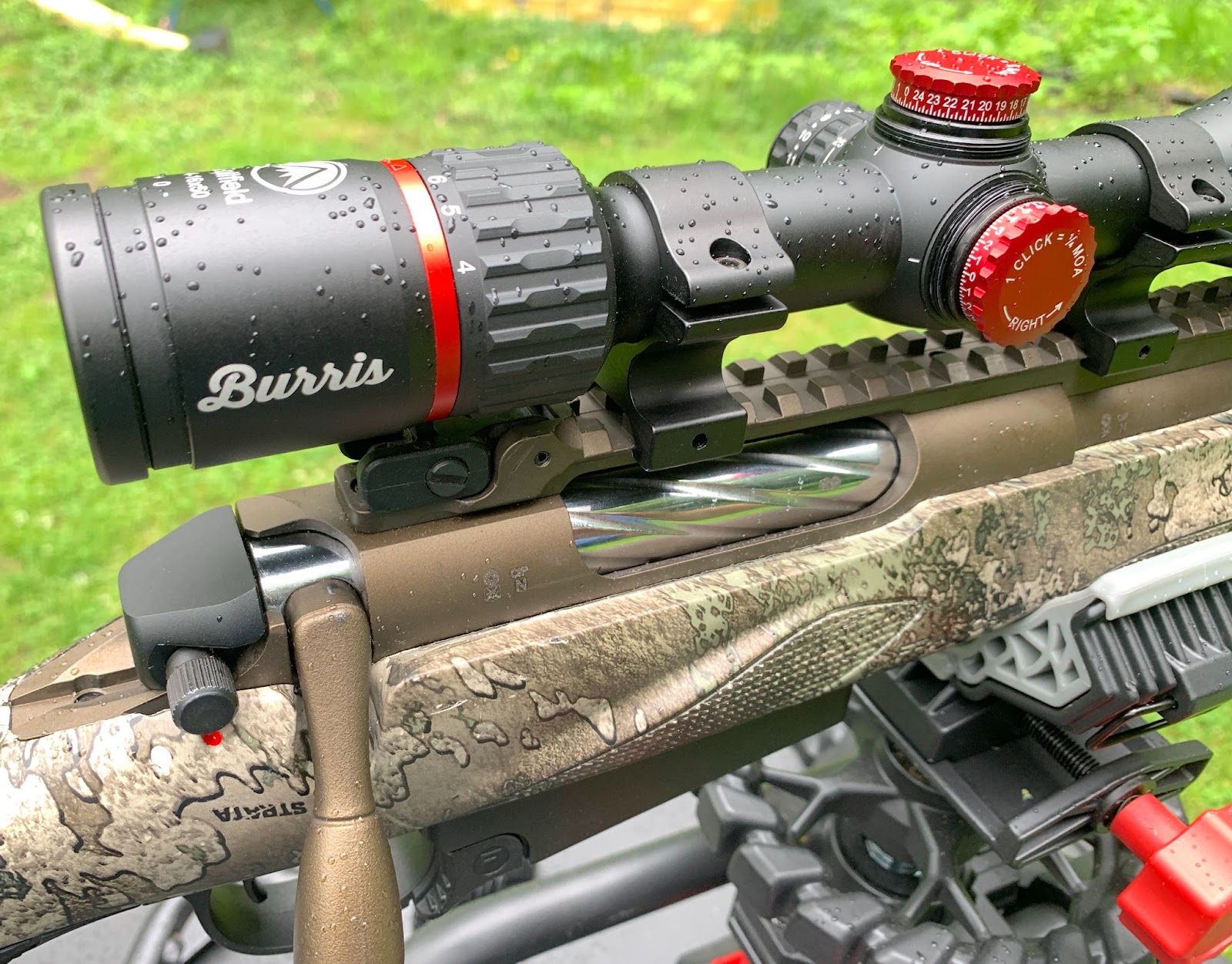
Specifications
- Reticle: Ballistic E3™
- Color: Matte Black
- Knob Style: Standard Capped
- Illumination: Yes
- Magnification: 4-16x
- Objective Diameter; 50 mm
- Focal Plane: Rear
- Main Tube Size: 1 inch
- Field Of View: 27 – 6.75 ft.
- Eye Relief: 76 – 85 mm
- Exit Pupil: 10.0 – 3.8 mm (Low – High)
- Click Value: ¼ MOA
- Elevation Adjustment, Total Capability: 54 MOA
- Windage Adjustment: 54 MOA
- Parallax/Focus: Side Focus, 25 yds. – infinity
- Length: 12.3 in.
- Weight: 18.2 oz.
- Battery: CR2032
- MSRP: $468
FastFire C Red Dot
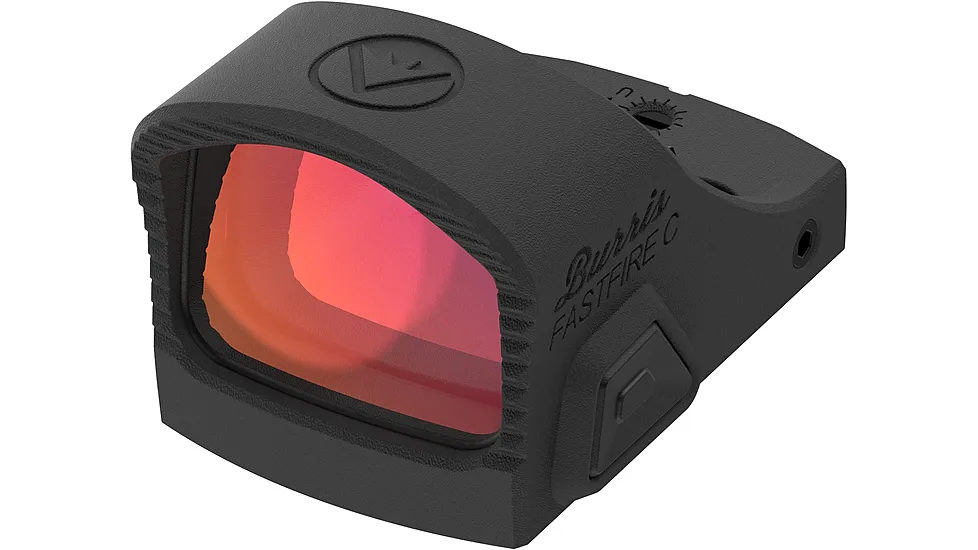
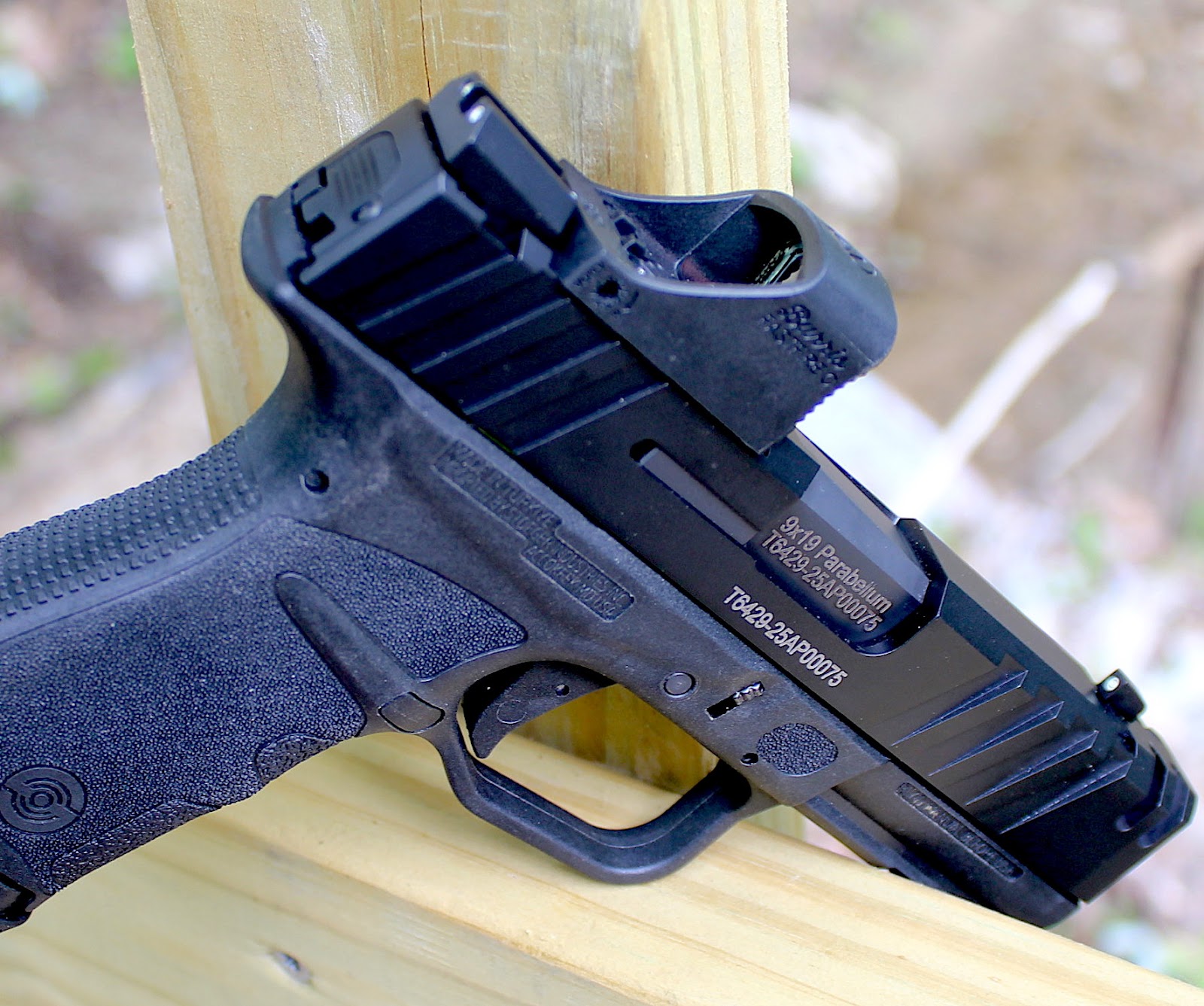
FastFire C atop the Stoeger Thinline 9mm pistol
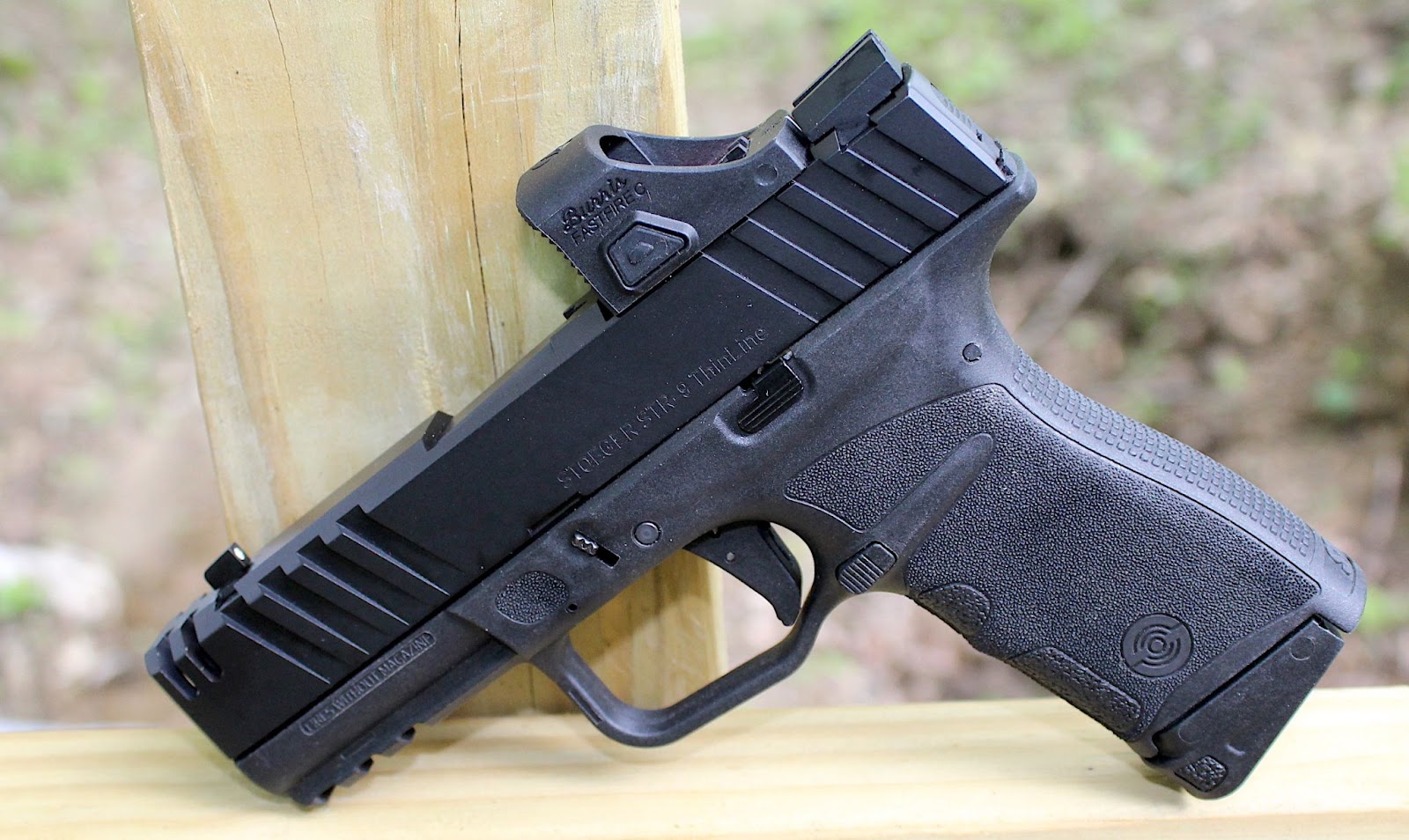
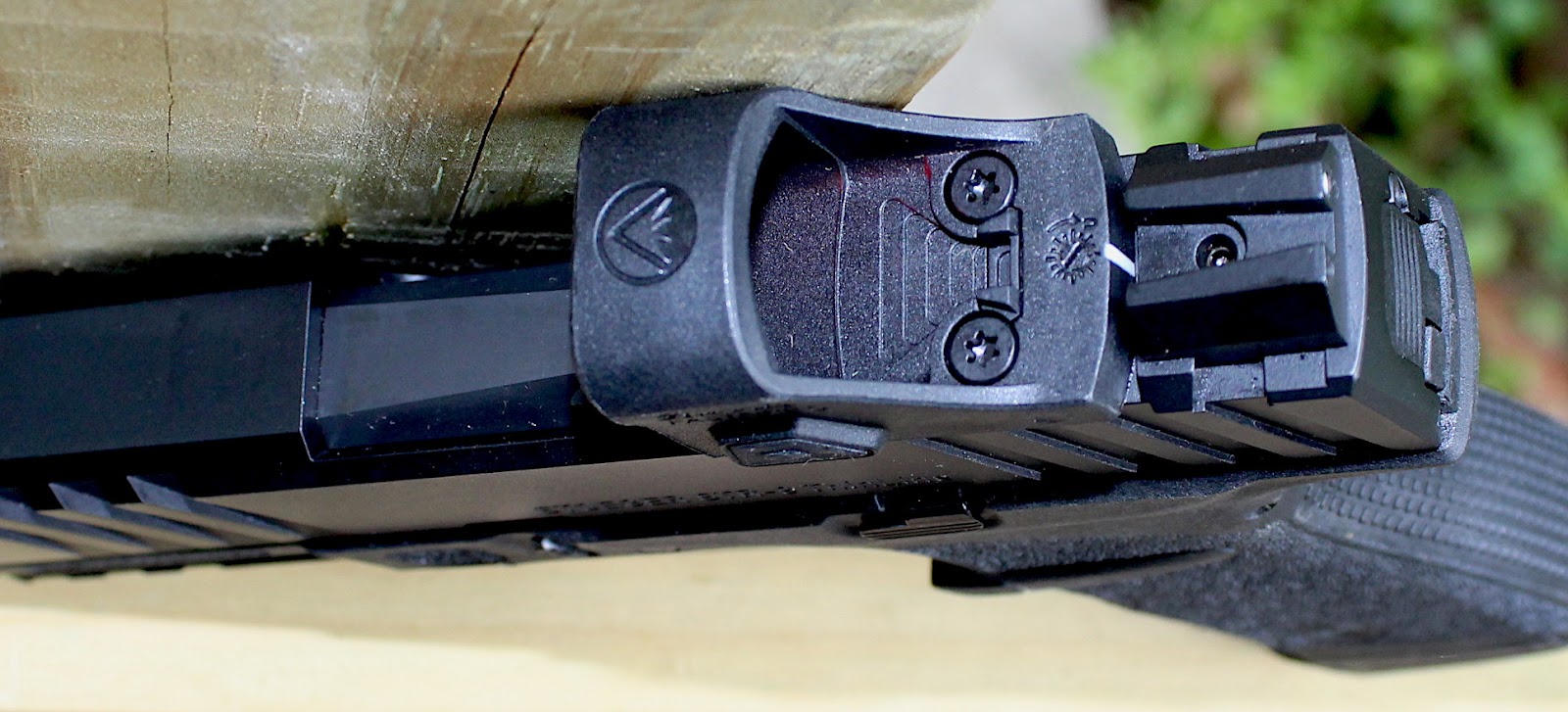
The FastFire C red dot is a handy little optic that doesn’t take up much room on your pistol. It was designed specifically to fit on compact and sub-compact pistols, and it weighs less than one ounce. Here are its specs…
Specifications
- Magnification: 1x
- Reticles: FastFire™ 6-MOA Dot
- Reticle Colors: Red
- Finish: Matte
- Eye Relief: Unlimited
- Click Value: 4 MOA
- Elevation Adjustment, Total Capability: 80 MOA
- Length: 1.61 in.
- Weight: 0.44 oz.
- Illumination Control: Push-Button
- Illumination Settings: 5 brightness settings plus Burris Intelligent Autobright
- Battery : CR2032
- MSRP: $276
The FastFire C uses Burris “Always On” technology but still delivers a run time of 25,000 hours on one battery. I like the fact that it is small and light. As such, it fits in many holsters that were not designed to accept a red dot on a pistol. It’s an easy mount, and it includes everything you need. It just plain works.
Signature LRF 2000 Range Finder

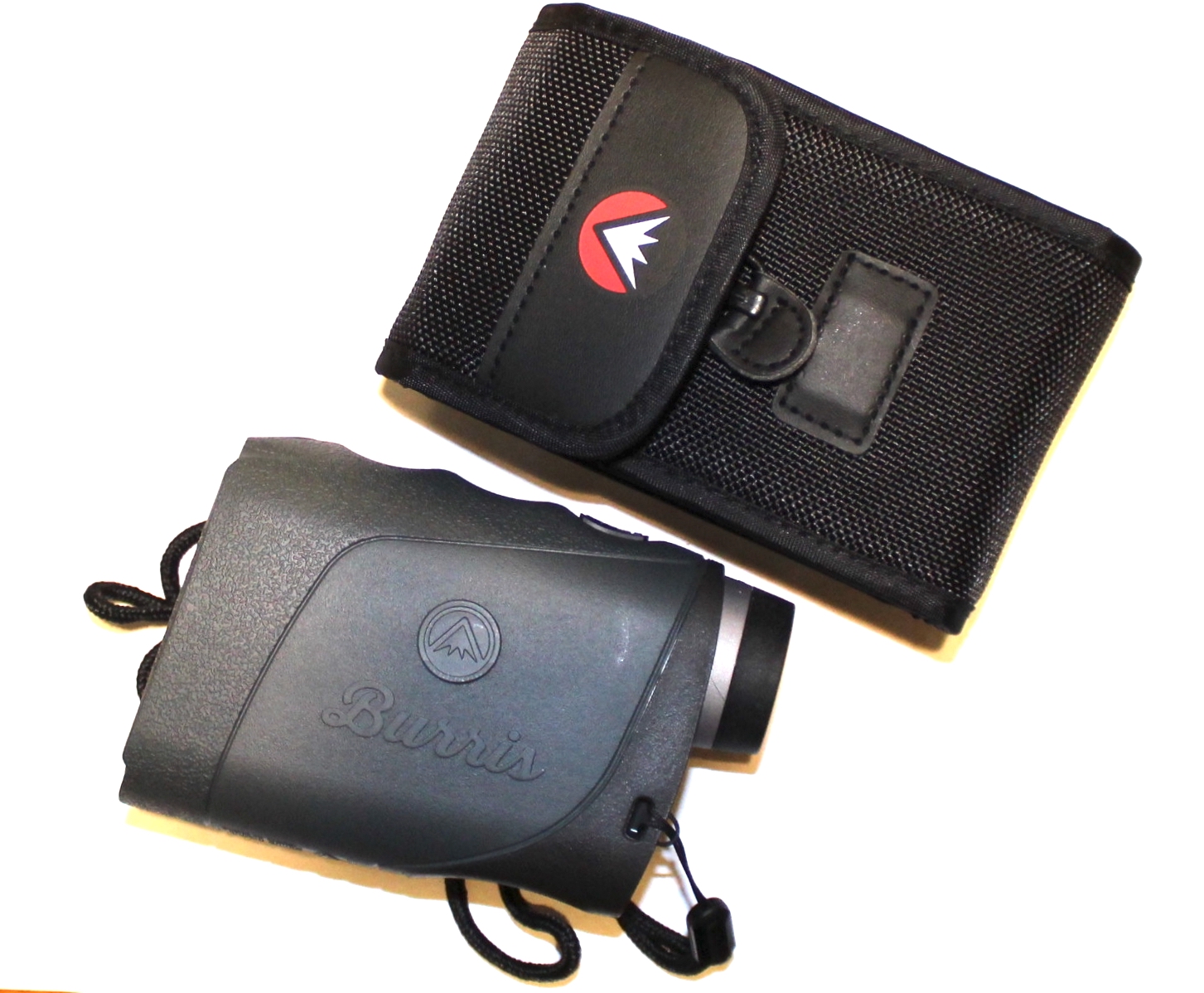
I have sat in a deer blind many times, watching a shy doe meander slowly across a cut corn or bean field. This was in my BRF – before range finders – days. I had to guess how far out she was. I remember one time tracking one across the open sights of my S&W 629 8 ⅜”-barrelled .44 Magnum and letting off the shot when she came in to what I was sure was 75 yards. She went down, thankfully.
I always step off my shots if possible. It was then that the knowledge that I wasn’t very good at range estimation became very evident. After going back for a long tape measure to verify what my feet told me, I discovered that she went down at a measured 105 yards from my position. This proved two things… first, that the .44 load was very effective – it wasn’t even a full-bore dragon-slayer but a heavy JHP .44 Special load from Georgia Arms. Secondly, it proved that my range estimation abilities were bupkis, kaka, nada.
So, I have been grateful for rangefinders. This Burris will come in handy the next time I see a doe creeping across a cut corn field. It will measure ranges from 5 to 2400 yards. Hopefully, I won’t need a 2400-yard measurement. That’s bordering on artillery territory… I’m no long-range shooter.
The thing is tiny and has different modes. You have sport, hunting, or auto range modes, or you can scan the field with instant ranging using scan mode. Its 2400-yard (2194-meter) range and HD glass make it easy to use. Also, distances can be displayed as line-of-sight or horizontal with angles of degree. Plus, I noticed a feature about it that my previous range finder didn’t have – the display is illuminated. Bright red numbers are easy to see in dim conditions. I truly appreciate that. When finished with it, pop it back into its case that has a belt loop on the back. It is very convenient to use. Also, its outer surfaces are coated in rubber, which helps protect it from knocks.
Specifications
- Magnification 7x
- Eye Relief 16mm
- Nitrogen Filled Yes
- Weight 6 oz.
- Dimensions 4.75 in x 3.25 in x 1.5 in
- Neck Strap Yes
- Carry Case Yes
- Angle Range ±70°
- Diopter Adjustment +/-6
- Operating Temperature 14°F to 131°F
- Power Source CR2 Lithium Battery x1
- Battery Life 2000 hrs.
- Laser Classification Class 1
- Parallax 50 yds. – infinity
- MSRP: $360
Droptine 10×42 Binoculars
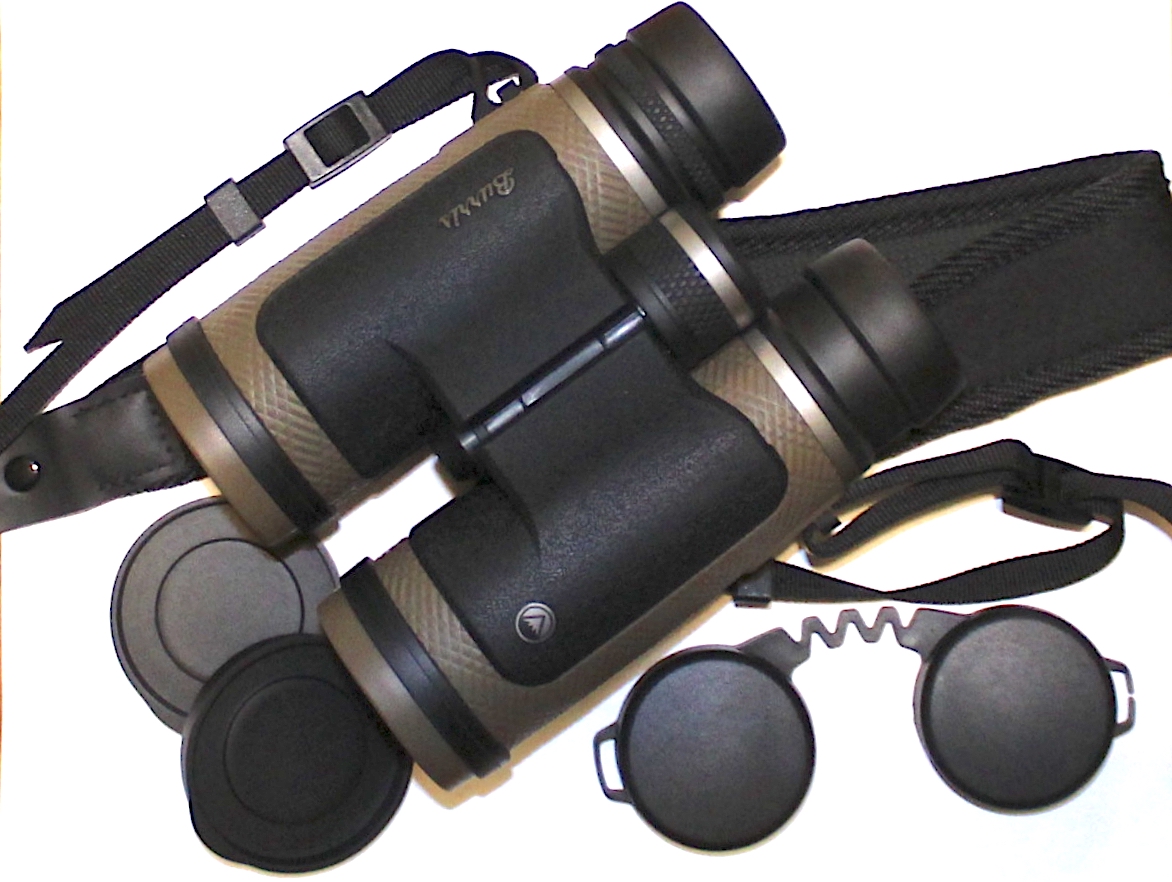
Who among us doesn’t need a set of good binoculars? Whether you are sitting in your deer blind or are perched in the nosebleed section of a football stadium, we all could use some optical up-close-ness now and then. These binoculars fill that need very nicely.
First, they are powerful enough at 10x to help you determine if that whitetail over yonder is a buck or a doe, or if it is one that you might be interested in. I can recall many times, sitting in the woods with my little, cheapo 8-power glasses, trying to see which of the three deer slowly approaching might be the one I should be focused on. Or even if they were deer. The compact, bargain binoculars I was using just weren’t up to the task. My only other option for more power back then was a set of binoculars that looked like they’d come off the bridge of the U.S.S. Missouri… huge and heavy. Thank goodness that now, for a weight of only 26 ounces, I can put around my neck a set of binoculars that is powerful enough to help me in my deer stand.
I ike the color, for lack of a better word, that this particular set of binoculars sports. They are a variation of FDE with black accents. I get tired of everything being plain ol’ black. And, not only do you get a nice ballistic nylon carry bag, but there are straps for both the bag and the binoculars. I know that this is fairly standard, but I’ve also seen a few that cheapened out on the accessories.
Specifications
- Magnification: 10x
- Focus System: Fast Focus
- Optics System: Roof Prism
- Fov Ft @ 1000 Yds: 330 ft.
- Close Focus: 7.5 ft.
- Exit Pupil (Low – High): 4.2 mm
- Eye Relief: 15 mm
- Ip Distance Range: 57 – 74 mm Adjustable
- Eyecups: Aluminum
- Nitrogen Filled: Yes
- Waterproof Depth: 1 meter
- Weight: 26 oz.
- Dimensions: 5.6(l) x 4.8(w) x 2.0(h) in.
- Neck Strap: Yes
- Carry Case Yes
- Operating Temperature: 5°F to 131°F
- MSRP: $335
In Conclusion
As I alluded to above, the world of optics for both long and short guns is huge and can be confusing to the prospective buyer. There are tons of models from different makers of scopes, red and green dot sights, thermal imaging items, spotting scopes, rangefinders, and other items. A shooter’s Christmas wish list could be comprised of nothing but optics, and that would keep Santa working overtime.
How do you know what to buy? It’s pretty simple, really… figure out what you need, for whatever gun you have. Then, do your research. If you hunt in the woods like I do, a lower-power variable optic is indicated… maybe an LPVO with an illuminated reticle for those dusk hours. If you want to shoot pistol competition, a red dot of some sort might work well. If you’re hunting out west and need lots of magnification, they have you covered. Decide what you need, then start your search.
Establish a budget, visit a storefront or two to see what you’re considering buying up close, and then make your purchase. (I try to support local merchants when I can.) Burris has just about anything a shooter might need… maybe it’s about time to check out their products. I know that they build good stuff, covered by a very good warranty, for not a lot of money, and that’s a good thing. Why not check them out?
Read the full article here

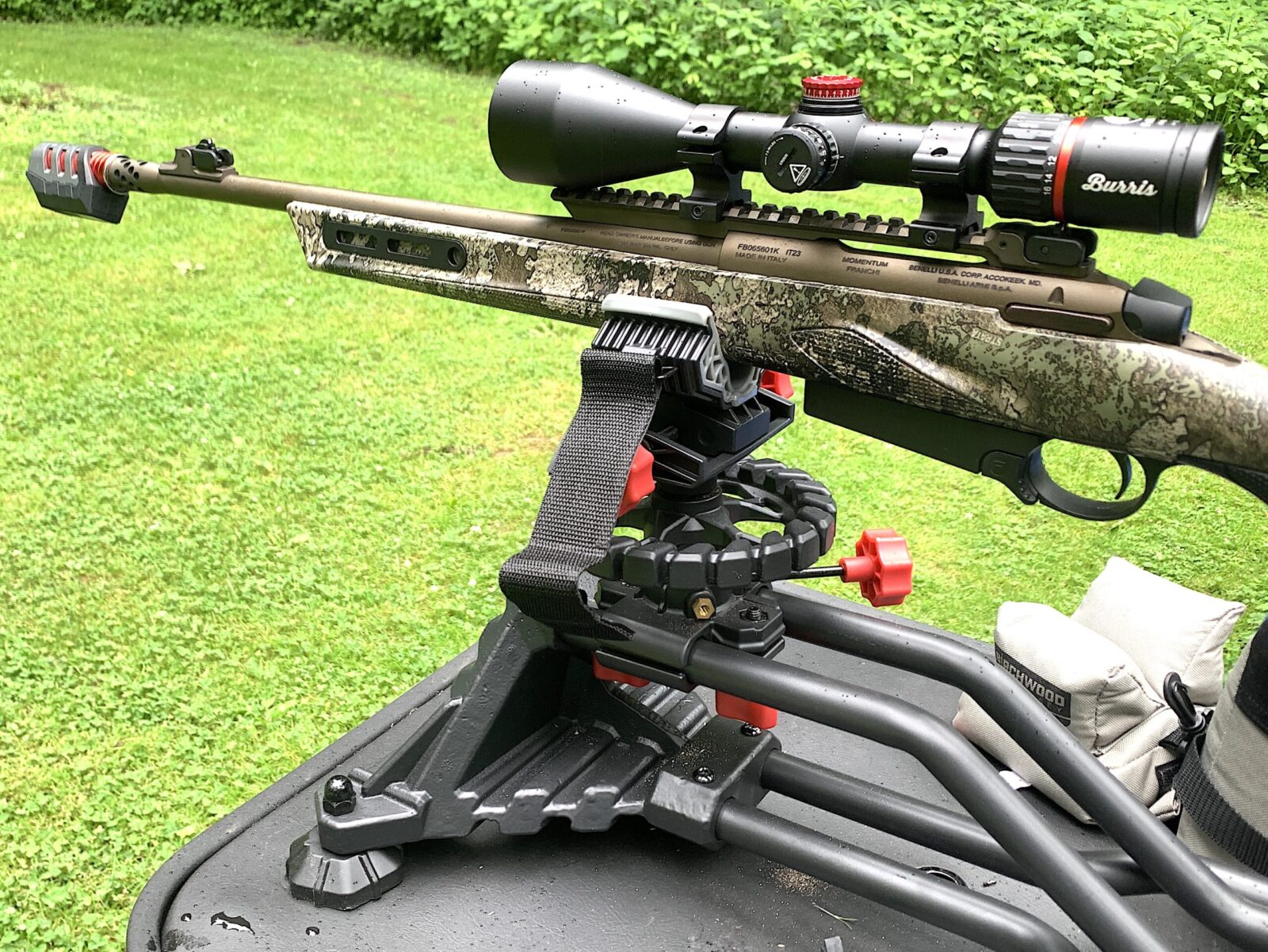
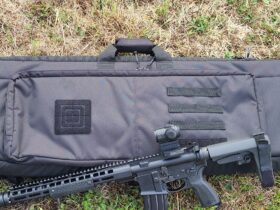
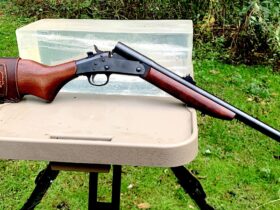
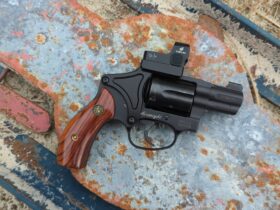
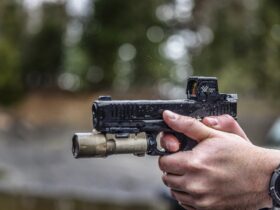
Leave a Reply